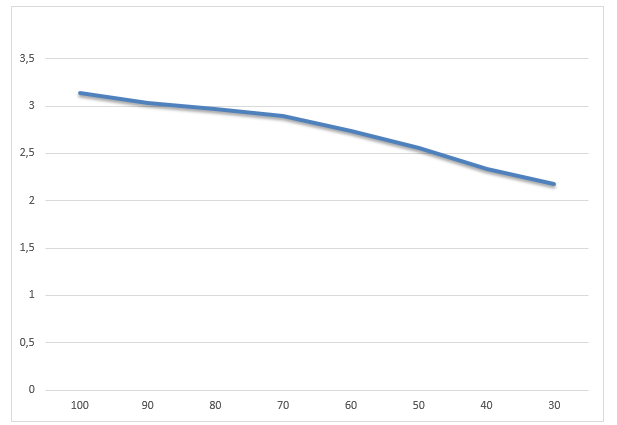Aim
The purpose of this experiment is to verify the principle that the resistance of a conductor is directly proportional to its length by using Ohm’s law.
Background
By definition “the idea of potential difference states that charged objects set up electric fields about them. The strength of the field varies with direction and distance from the object depending on the charge distribution of the object” (Cutnell & Johnson 1998, p. 588). For this reason, diverse points will not always have the same potential difference or voltage in the field. As a result of different potential, there will be movement of charges in one direction. Potential Difference is commonly known as voltage. Determination voltage or potential difference is always carried out between two potential points.
Electric Current is the movement or flow of electric charges. A charge can be either positive or negative. The nucleus of an atom is enclosed by negatively charged protons, which circulate around it. An electric current can consist of positive, negative or both types of charge (Cutnell & Johnson 1998, p. 589).
An electric current is either direct or alternating, depending on its source. Direct current flows in one direction alternating current on the other hand regularly reverses its direction of flow. It is produced by AC generators and is used in most homes. Each time AC completes two changes of direction, it completes one whole cycle. The number of cycles per second is called the frequency of the AC.
Ohm’s Law is a mathematical formula that expresses the relationship between the Potential difference, electric current, and resistance in a circuit. The German Physicist, George Ohm discovered this relationship in 1826 (Cutnell & Johnson 1998, p. 590). When applied to a direct-current circuit, Ohm’s Law states, that the electromotive force (E) measured in volts =the current (I) in amperes multiplied by the resistance (R) in ohms;
Therefore E = IR. …. (1)
When the law is used for an alternating-current circuit, resistance is replaced by impedance (Z), also in ohms. “The flow of alternating current produces a counter electromotive force, which resists the current” (Cutnell & Johnson 1998, p. 591). The strength of such resistance depends on how rapidly the current alternates. Impedance consists of resistance, called reactants n combined with the circuits’ regular resistance to direct current.
Materials and Methods
- 100cm of constantan wire
- Ammeter
- Voltmeter
- Battery
- Crocodile clips

Method
- The apparatus was set up as in the diagram above and the voltageacross the wire was set to be 3Volts.
- The initial length of the Constantan wire was set to be 1metre (100 centimeters). The current was measured using the ammeter and the result recorded.
- The distance between the crocodile clips was adjusted until it was 90 cm as measured with the meter rule. The voltage adjusted and the current recorded.
- The value of the current through the wire was measured using the ammeter and recorded. This is repeated with 10cm intervals
- The length of wire between the crocodile clips was finally reduced to 30 cm, the voltage adjusted, and the current recorded.
Results
Table 1. Shows the results obtained from the experiment

Discussion
The results show that the longer the wire, the more the resistance. From the graph, we see that there is direct proportionality i.e the resistance goes up gradually as the length of the wire is increased. The graph has a positive gradient, which indicates that the length of the wire is increasing in direct proportion to the resistance. I believe this occurred because, the longer the wire, the greater the resistance. This is as a result of increased rate of collision of electrons owing to the fact that the length of the wire has been increased and also some metal contamination.
Conclusion
The purpose of this experiment was to verify the principle that the resistance of a conductor is directly proportional to its length by using Ohm’s law.
From the tabulated results and the graph, it can be seen that there is a linear relationship between the resistance of the conductor and its length. Therefore, ohms law is correctly proven.
Errors might have been introduced by the contacts between the crocodile clips and the wire, which may have introduced extra resistance into the circuit. The amount of extra resistance cannot be estimated and may have changed during the course of the investigation.
Constantan wire was selected for the investigation because its resistance does not change very much as the temperature changes. However, in cases where it is not available it should be possible to a technique for connecting the wires into the circuit, which would eliminate any uncertainty due to the contacts
References
John, D. C & Kenneth W. J, 1998, Physics, John Wiley and Sons, New York.